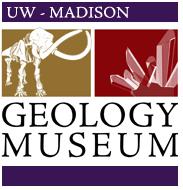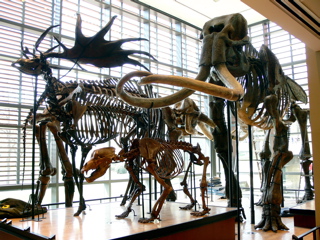
Petrified wood, also known as petrified tree, is the name given to a special type of fossilized wood, the fossilized remains of terrestrial vegetation. Petrifaction is the result of a tree or tree-like plants having been replaced by stone via a mineralization process that often includes permineralization and replacement. The organic materials making up cell walls have been replicated with minerals. In some instances, the original structure of the stem tissue may be partially retained. Unlike other plant fossils, which are typically impressions or compressions, petrified wood is a three-dimensional representation of the original organic material.

Amateur geology or rock collecting is the non-professional study and hobby of collecting rocks and minerals or fossil specimens from the natural environment. In Australia, New Zealand and Cornwall, the activities of amateur geologists are called fossicking. The first amateur geologists were prospectors looking for valuable minerals and gemstones for commercial purposes. Eventually, however, more people have been drawn to amateur geology for recreational purposes, mainly for the beauty that rocks and minerals provide.

The UW–Madison Geology Museum (UWGM) is a geology and paleontology museum housed in Weeks Hall, in the southwest part of the University of Wisconsin–Madison campus. The museum's main undertakings are exhibits, outreach to the public, and research. It has the second highest attendance of any museum at the University of Wisconsin–Madison, exceeded only by the Chazen Museum of Art. The museum charges no admission.

The Beneski Museum of Natural History, Amherst College is located on the campus of Amherst College in Amherst, Massachusetts. It showcases fossils and minerals collected locally and abroad, many by past and present students and professors. The Museum is located in the Beneski Earth Sciences Building, completed in 2006. It is a member of Museums10.

The Lapworth Museum of Geology is a geological museum run by the University of Birmingham and located on the university's campus in Edgbaston, south Birmingham, England. The museum is named after the geologist Charles Lapworth, its origins dating back to 1880. It reopened in 2016 following a £2.7 million redevelopment project that created new galleries and displays, as well as modern visitor and educational facilities.

The Sedgwick Museum of Earth Sciences, is the geology museum of the University of Cambridge. It is part of the Department of Earth Sciences and is located on the university's Downing Site in Downing Street, central Cambridge, England. The Sedgwick Museum is the oldest of the eight museums which make up the University of Cambridge Museums consortium.

The New Jersey State Museum is located at 195-205 West State Street in Trenton, in the U.S. state of New Jersey. The museum's collections include natural history specimens, archaeological and ethnographic artifacts, and cultural history and fine art objects. Exhibitions, educational activities, research programs, and lectures are also offered. The museum, a division of the New Jersey Department of State, includes a 140-seat planetarium and a 384-seat auditorium.

The Rice Northwest Museum of Rocks and Minerals is a non-profit museum in Hillsboro, Oregon, United States. Located just north of the Sunset Highway on the northern edge of Hillsboro, the earth science museum is in the Portland metropolitan area. Opened in 1997, the museum's collections date to the 1930s with the museum housed in a home built to display the rock and mineral collections of the museum founders. The ranch-style home is listed on the National Register of Historic Places, the first of its kind listed in Oregon. In 2015 the museum became a Smithsonian Affiliate museum.

Permineralization is a process of fossilization of bones and tissues in which mineral deposits form internal casts of organisms. Carried by water, these minerals fill the spaces within organic tissue. Because of the nature of the casts, permineralization is particularly useful in studies of the internal structures of organisms, usually of plants.

Specimen Ridge, el. 8,379 feet (2,554 m) is an approximately 8.5-mile (13.7 km) ridge along the south rim of the Lamar Valley in Yellowstone National Park. The ridge separates the Lamar Valley from Mirror Plateau. The ridge is oriented northwest to southeast from the Tower Junction area to Amethyst Mountain. The ridge is known for its abundance of amethyst, opal and petrified wood. It was referred to as Specimen Mountain by local miners and was probably named by prospectors well before 1870. The south side of the ridge is traversed by the 18.8-mile (30.3 km) Specimen Ridge Trail between Tower Junction and Soda Butte Creek. The trail passes through the Petrified Forest and over the summit of Amethyst Mountain el. 9,614 feet (2,930 m).

Mineral collecting is the hobby of systematically collecting, identifying and displaying mineral specimens. Mineral collecting can also be a part of the profession of mineralogy and allied geologic specialties. Individual collectors often specialize in certain areas, for example collecting samples of several varieties of the mineral calcite from locations spread throughout a region or the world, or of minerals found in pegmatites.
The Franklin Mineral Museum in Franklin, New Jersey is a mineral, geology, and mining museum at the former Franklin Mine. It is located in Sussex County, New Jersey.

The Geological Museum of the State Geological Institute is a museum in Warsaw, Poland. The museum was established in 1919.
The Arizona Mining and Mineral Museum in Phoenix, Arizona, was a museum focused on minerals and mining. Last operated by the Arizona Historical Society, a state government agency, its exhibits included more than 3,000 minerals, rocks, fossils, and artifacts related to the mining industry. The museum closed in May 2011. In April 2017, legislation was passed to reopen the museum under the ownership of the University of Arizona.
Amethyst Mountain, el. 9,609 feet (2,929 m) is the highest peak and central part of a northwest – southeast trending ridge that lies between the Lamar River to the northeast and Deep Creek to the southwest within Park County, Wyoming. From northwest to southeast, this ridge consists of Specimen Ridge, Amethyst Mountain, and the Mirror Plateau in Yellowstone National Park. The nearest town is Silver Gate, Montana, which is 19.2 miles away.

The Gargoti Museum is a museum in the town Sinnar near Nashik in Indian state of Maharashtra that houses a collection of natural mineral and gem specimens collected by K. C. Pandey over 40 years. The word "goti" refers to a Marathi word meaning stone or pebble. This is India's first and only gem, mineral, and fossil museum. It also houses the largest and finest collection of Indian zeolite minerals and crystals in the world.

Charlotte Hill (1849–1930) was a homesteader born in Indiana who contributed to paleontology through finding several significant fossil within the Florissant Fossil Beds. She sold many fossils to other collectors and investigators to earn money on the side. Her most significant discovery was the Persephone butterfly near Florissant, Colorado. Charlotte's discoveries brought attention to Florissant as an important location for fossils, and her findings created an impetus for recognition of the fossil beds as a national monument within the United States of America. Many of her collected fossils now reside in the Harvard University museum and the Smithsonian's Museum of Natural History.

The Callixylon tree is a 250,000,000 year old petrified tree stump discovered by John Fitts in a field in 1913. This stump is reputed to be the largest stump of Callixylon in the world.

The Lemmon Petrified Wood Park & Museum is a roadside attraction located off U.S. 12 in Lemmon, South Dakota, which features large outdoor sculptures created out of Mesozoic petrified wood. It was created in 1933 by Ole Quammen, a former mayor of Lemmon. Besides the outdoor park, the site has a museum, also built out of petrified wood, which hosts smaller collections of fossils. It was listed on the National Register of Historic Places in 1977 as the Lemmon Petrified Park; when dedicated, it claimed to be the largest petrified wood park in the world. The park and museum, which do not charge admission, are open during the summer months between Memorial Day and Labor Day.
Iron Hill Museum is a museum in Newark, Delaware, in the United States. Since 1968 it was located in a former African-American school, but moved to the new building in 2016.

















